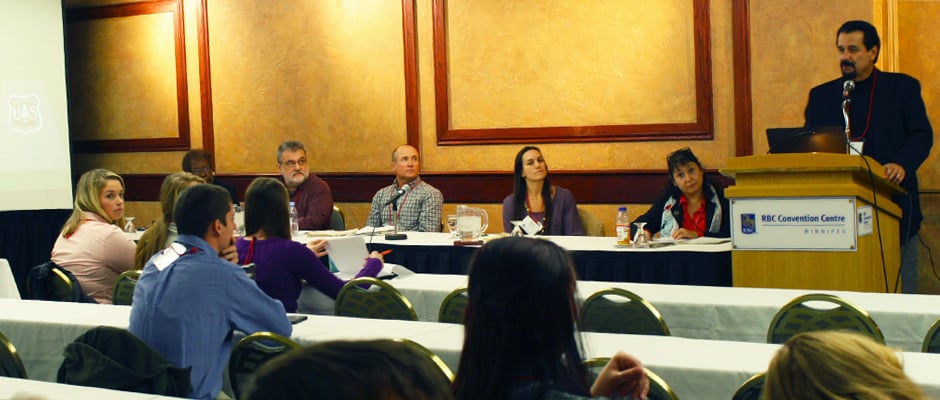Share this article
Students Learn About Careers, Get Advice from Professionals
Students filled the room at the Careers with U.S. Forest Service and Wildlife Services event to hear straight from the source what it’s like to work for the two federal agencies.
Representatives from the U.S. Forest Service included individuals from all different stages in their career from an early career professional to a seasoned senior scientist. “There are 450 scientists in the Forest Service and about 100 critter people like us,” said Monica Tomosy, the National Program Leader for Wildlife Research with the U.S. Forest Service. “What’s unique about our work is that it’s interdisciplinary and management driven.”
Among the U.S. Forest panel was Serra Hoagland, an early career biologist at the agency. She is currently working with a tribe in Mexico and studying how forest treatments may be affecting the spotted owl. Compared with the National Parks Service, where Hoagland worked previously, the U.S. Forest Service offers wildlife professionals more opportunities to conduct meaningful research and on-the-ground management, she said.
Also on the panel were Brian Logan, the National Wildlife Program Leader with the agency, and Bruce Marcot, a senior scientist with the Forest Service. Logan, a member of The Wildlife Society since the late 80s advised students to stay in the field no matter what they do. “Don’t go work at a pizza place in the summer,” he said. “Pursue internships. Explore different options.”
Wildlife Services also had representatives from diverse areas of the agency at the event.
Mike Begier, the national rabies management coordinator with Wildlife Services spoke about the agency, which has a total of 2,200 individuals working in both research and operations. The agency helps address different problems especially relating to wildlife and human health and safety.
Other individuals on the panel working with Wildlife Services included Craig Hicks, a wildlife disease biologist in Ohio and feral swine coordinator, and Jeremy Irish, a wildlife specialist in Wisconsin. Irish works with lethal and nonlethal control of wolves, bears and other species. “It’s a lot of wildlife work,” he said. “But it’s a lot of people work, too.”
The event wrapped up with a Q&A session for the panelists. One student asked about the best route to finding a job and whether a PhD is truly necessary to get there. The panelists noted that there really is no clear formula, and that it’s okay to get a PhD at some point after students earn their master’s degree.
In their final remarks, individuals with both agencies spoke about the promising outlook for students in the wildlife biology profession as an increasing number of job opportunities continue to open up. As Logan said, “The opportunity is there now.”








